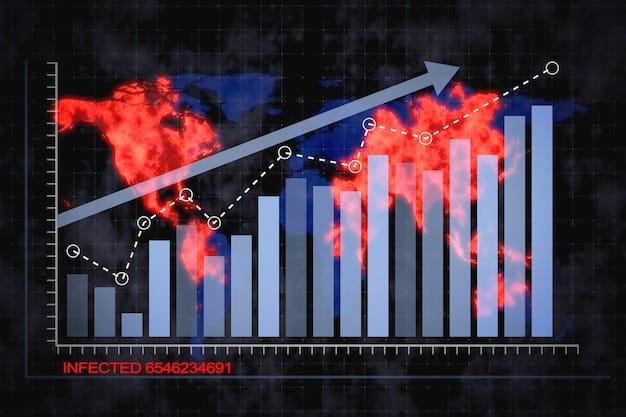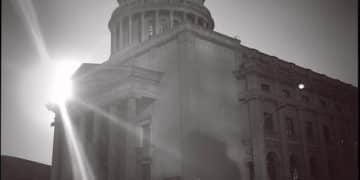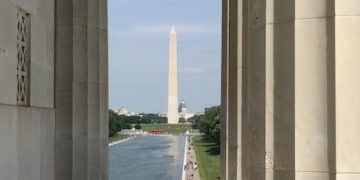Emergency Fed Meeting: Impact on the US Economy

An emergency Fed meeting announcement can signal potential shifts in monetary policy, impacting interest rates, inflation, and overall financial stability within the US economy.
The sudden announcement of an emergency Fed meeting has sent ripples through financial markets. What does this unscheduled gathering mean for the US economy, and what actions might the Federal Reserve take?
Understanding the Urgency of an Emergency Fed Meeting
An emergency meeting of the Federal Reserve is not a routine occurrence. These meetings are typically convened when significant and unexpected economic or financial developments warrant immediate attention and potential policy responses. Therefore it is important to understand the context and what that might entail.
The fact that the Fed has called an unscheduled meeting suggests that policymakers are concerned about a situation that requires swift action. This could include anything from a sudden downturn in economic growth to a crisis in the financial system.

What Triggers an Emergency Meeting?
Several factors can prompt the Federal Reserve to call an emergency meeting:
- Financial Market Turmoil: A sudden and significant drop in the stock market or other financial assets.
- Economic Shocks: Unexpected events such as a major natural disaster or a geopolitical crisis.
- Banking System Instability: Risks to the stability of the banking system or individual financial institutions.
Past emergency meetings have been convened in response to events such as the 1987 stock market crash and the 9/11 terrorist attacks. In each case, the Fed acted quickly to provide liquidity and support the financial system.
Therefore one can say that emergency meetings are called when the economic outlook suddenly turns bleak.
Decoding the Fed’s Potential Actions
Given the announcement of an emergency meeting, it’s crucial to consider the possible actions the Federal Reserve might take. These actions are designed to stabilize the economy and prevent further deterioration of financial conditions.
The Fed has several tools at its disposal, each with its own set of potential impacts.
Key Policy Tools the Fed Might Deploy
- Interest Rate Adjustments: Cutting or raising the federal funds rate to influence borrowing costs.
- Quantitative Easing (QE): Purchasing government bonds and other assets to inject liquidity into the market.
- Forward Guidance: Communicating the Fed’s intentions and expectations to shape market expectations.
Interest rate cuts are a common response to economic downturns, as they can stimulate borrowing and investment. Quantitative easing can also provide additional support by lowering long-term interest rates. Communication through forward guidance helps to influence markets as well.
Quantitative easing has had an impact on multiple sectors, including investments.
Impact on Interest Rates and Inflation
One of the primary concerns following an emergency Fed meeting is the potential impact on interest rates and inflation. These two factors are closely intertwined and can have significant effects on the broader economy.
Any action taken by the Fed will be closely watched for its impact on inflation and interest rates.

How the Fed’s Decisions Affect Inflation
The Federal Reserve’s dual mandate is to maintain price stability and promote full employment. In practice, this means keeping inflation at a target level, typically around 2%.
The Fed can influence inflation through:
- Demand-Side Policies: Interest rate adjustments that affect consumer spending and business investment.
- Supply-Side Policies: Actions to address supply chain disruptions and other factors affecting production costs.
If the Fed believes that inflation is too high, it may raise interest rates to cool down the economy. Conversely, if inflation is too low, it may lower interest rates to stimulate demand.
The Fed’s decisions have a widespread impact, influencing everything from mortgages to business loans.
The Stock Market’s Reaction to a Fed Meeting
The stock market tends to react strongly to any news from the Federal Reserve, and an emergency meeting is no exception. Investors often interpret these meetings as a sign of uncertainty and potential volatility.
The market’s response can depend on a variety of factors, including the specific actions taken by the Fed and the overall economic outlook.
Factors Influencing Market Behavior
- Investor Sentiment: The prevailing mood among investors, which can be influenced by news and events.
- Earnings Expectations: Anticipations about future corporate earnings, which drive stock prices.
- Global Economic Conditions: Developments in other countries that can affect US markets.
Historically, Fed interventions have sometimes led to short-term market rallies, but the long-term effects can be more complex. It’s essential for investors to remain disciplined and avoid making impulsive decisions based on short-term market movements.
The way the market goes can depend greatly on how good or bad the announcements are.
Impact on Small Businesses and Consumers
The decisions made during an emergency Fed meeting can have far-reaching consequences for small businesses and consumers across the United States. Understanding these impacts can help individuals and businesses make informed financial decisions.
Small businesses and consumers are the backbone of the economy, and their financial well-being is closely tied to Fed policy.
How Fed Policy Affects Small Businesses
The availability and cost of credit are critical for small businesses. The Fed’s actions can directly impact these factors:
Small businesses need to be aware of these decisions in order to act accordingly:
- Loan Rates: Interest rates on small business loans can fluctuate based on Fed policy.
- Access to Capital: The Fed’s actions can influence bank lending behavior, affecting the availability of credit.
Lower interest rates can make it easier for small businesses to borrow money and invest in growth. However, higher rates can increase borrowing costs and potentially slow down expansion.
It is important to keep up-to-date if you are running a small business in the US. The economy is ever changing because of this.
Historical Analysis of Past Emergency Fed Meetings
Examining past emergency Fed meetings can provide valuable insights into how the central bank typically responds to crises and what the potential outcomes might be. By analyzing historical examples, we can better understand the current situation and anticipate potential policy responses.
Looking back at past actions can offer a framework for understanding the Fed’s current moves.
Case Studies of Previous Emergency Meetings
- 1987 Stock Market Crash: The Fed injected liquidity into the market to stabilize the financial system.
- 9/11 Terrorist Attacks: The Fed provided emergency loans to banks to ensure the smooth functioning of the financial system.
- 2008 Financial Crisis: The Fed implemented a range of measures, including interest rate cuts and quantitative easing, to combat the crisis.
In each of these cases, the Fed acted decisively to mitigate the negative impacts of the crisis and restore confidence in the financial system. While the specific actions taken may vary depending on the circumstances, the underlying goal remains the same: to stabilize the economy and prevent further damage.
Looking at each past experience can determine future actions and what is to come.
| Key Point | Brief Description |
|---|---|
| 🚨 Emergency Meeting | Immediate attention needed due to unexpected economic/financial developments. |
| 📉 Actions | Rate adjustments, Quantitative Easing (QE), forward guidance to stabilize markets. |
| 💰 Impact | Affects interest rates, stock market, small businesses & overall US economy. |
Frequently Asked Questions
▼
The Fed calls an emergency meeting to address significant and unexpected economic or financial developments that require immediate action, ensuring stability and confidence in the markets.
▼
During an emergency meeting, the Fed can adjust interest rates, implement quantitative easing, use forward guidance, and offer emergency loans to banks to stabilize the economic outlook.
▼
The actions of the Fed will influence the interest rates and inflation, affecting borrowing costs and the overall price level, and ensuring price stability and promoting full employment.
▼
The stock market reacts strongly to emergency Fed meetings, often experiencing heightened volatility as investors assess the implications of the Fed’s decisions and the economic outlook.
▼
Small businesses are affected by the available credit and loan rates. The decisions can influence bank lending behavior and affect the availability of credit for small businesses to grow.
Conclusion
In conclusion, the announcement of an emergency Fed meeting signals a potentially significant shift in monetary policy. The actions taken during this meeting will have far-reaching consequences for interest rates, inflation, financial markets, and the overall health of the US economy. Staying informed and understanding the Fed’s potential responses is crucial for navigating the uncertain economic landscape.





